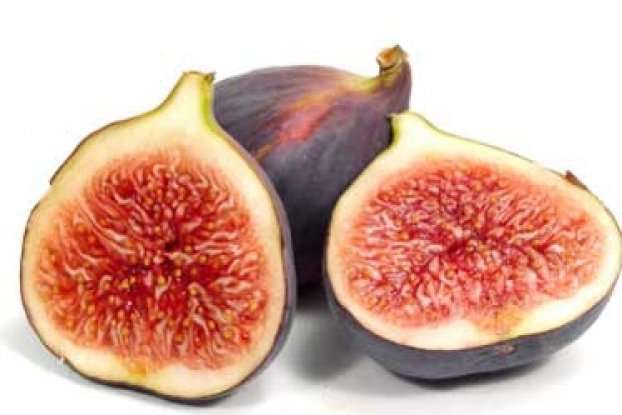A female fig wasp descends through the ostiole into the center of the fig plant's syconium. See more insect pictures Mark Moffet/Minden Pictures/ Getty Images
To really understand the wasp-eating dilemma associated with figs, you have to first look at the closely connected life cycles of both the plant and the insect. The current mutual relationship between the two didn't happen overnight. It's the result of millions of years of evolution.
The fig plant and the fig wasp both have the same goal: reproduction. For this to happen, a fig plant needs to share its genetic material (in the form of pollen) with another of its kind, and the fig wasp needs a place where its larva can grow and feed. Think of the fig wasp as a tenant, and the fig plant as a landlord who takes payment in the form of pollen.
What we call a fig (a structure called the syconium) is more inverted flower than fruit, with all its reproductive parts located inside. After a female fig wasp flies over from the fig plant she emerged from, she must travel to the center of the syconium to lay her eggs. To get there, she climbs down through a narrow passage called the ostiole. The passage is so cramped that the tiny fig wasp loses her wings and antenna during her claustrophobic trek. Once inside, there's no getting back out and flying to another plant -- but is she in the right place?
This content is not compatible on this device.
Fig plants boast two kinds of figs: male caprifigs and female edible figs.
If a female wasp enters a caprifig, she'll find male flower parts that are perfectly shaped to hold the eggs she'll eventually lay. The eggs will grow into larvae, which will develop into male and female wasps. After hatching, the blind, wingless male wasps will spend the remainder of their lives digging tunnels through the fig. The female wasps then emerge through these tunnels and fly off to find a new fig -- carrying precious pollen with them.
If a female fig wasp enters an edible fig, she eventually dies from exhaustion or starvation. The female flower parts include a long stylus that hinders her attempts to lay her eggs. She may die, but she succeeds in delivering the much-needed pollen first. So a fig farmer winds up with caprifigs full of wasp eggs and edible figs full of seeds.
Though edible figs may not be filled with baby wasps, doesn't this mean that these figs contain a lot of female wasps who died of loneliness? Read on to find out what (or whom) you're munching on when you grab a fig treat.

SmokedMeatIsland on May 29th, 2017 at 01:34 UTC »
Figs are sweet because so is revenge. Die and get eaten you wasp fucks.
Azozel on May 29th, 2017 at 01:19 UTC »
Fig newtons aren't cookies! They're wasps and cake!
shalaby on May 29th, 2017 at 01:18 UTC »
This is incorrect. Commercially grown figs are self pollinating varieties and do not contain digested wasps. A small percentage of naturally pollinated varieties native to the Mediterranean would.